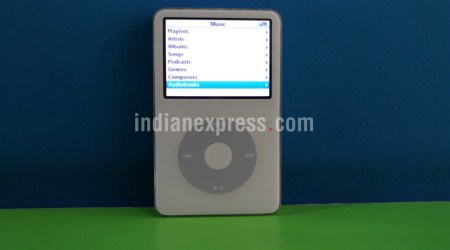 Huawei is the largest of a coterie of Chinese smartphone makers that have grabbed global market share via affordable phones with premium specifications. (Source: Bloomberg)
Huawei is the largest of a coterie of Chinese smartphone makers that have grabbed global market share via affordable phones with premium specifications. (Source: Bloomberg)
Huawei Technologies Co is aiming to grow mobile shipments by only a modest amount in 2017, as it gears up to go head-to-head with the hotly anticipated 10th-anniversary edition of Apple Inc.’s iPhone.
The world’s number three smartphone maker, which in 2016 declared it will someday surpass both Apple and Samsung Electronics Co. in market share, is shooting for shipments of 140 million to 150 million units in 2017 — up marginally from 139 million in 2016. But it’s also putting the finishing touches on its most powerful device yet, the Mate 10.
Huawei is the largest of a coterie of Chinese smartphone makers that have grabbed global market share via affordable phones with premium specifications. The Mate 10 will debut right around the time Apple is expected to take the lid off its own flagship device, but will trump the iPhone in many aspects, said Richard Yu, chief of Huawei’s consumer division.
“We will have an even more powerful product,” Yu said in an interview. “The Mate 10, which has much longer battery life with a full-screen display, quicker changing speed, better photographing capability and many other features that will help us compete with Apple.”
Yu issued his challenge after Huawei reported a sharp fall in revenue growth in the first half, as smartphone sales tapered off from the dizzying pace of 2016. It posted a 15 percent rise in revenue to 283.1 billion yuan ($42 billion) in the first six months of 2017 — half the pace at which sales grew last year.
Its breakneck expansion in 2016 came at a cost: Huawei’s earnings grew at their slowest pace in five years in 2016, as it sank money into 5G research and a marketing blitz to gain ground in smartphones. The company didn’t release first-half income numbers on Thursday.
Eric Xu, one of Huawei’s several rotating chief executives, warned in December that mounting expenses could damage profitability. He pledged in a memo to staff to overhaul its culture, weed out unnecessary expenses and re-think the way it conducts business, expecting global uncertainty to mount in 2017. Its main business of telecommunications equipment is slowing as phone carriers rein in network rollouts to prepare for the advent of faster 5G standards.
Huawei’s consumer division, comprising mainly smartphones, reported a 36 percent rise in revenue to 105.4 billion yuan during the first six months. The unit is targeting 25 percent growth in consumer revenue to $33 billion in 2017, down from about 42 percent in 2016. It also sells smartwatches, tablets and accessories from earbuds to cameras.
Huawei controlled a 9.8 percent share of the global smartphone market in the first quarter, according to research firm IDC. In China, it overtook Oppo in the first quarter by shipping 20.8 million smartphones, one fifth of the country’s overall sales, IDC said. The company, founded by former army engineer Ren Zhengfei three decades ago, has managed to make inroads into segments once dominated by Apple and Samsung.
It enlisted prestigious camera brand Leica to improve photo quality as a dual-camera became standard-issue for flagship handsets. Its latest, the 5.5-inch P10 Plus, goes for as much as 5,588 yuan. The company also introduced its first laptop, the MateBook X, in May to compete with HP Inc. and Lenovo Group Ltd. in personal computers.
“We are giving up the very low-end devices because the margin in this is extremely low, and it’s not making enough profit for us,” Yu said. Huawei also intends to sustain the pace of an overseas expansion that’s already taken it into Europe and other more developed markets. “The priority is Europe, China and Japan, where the economy is healthy and people are able to consume them.”

